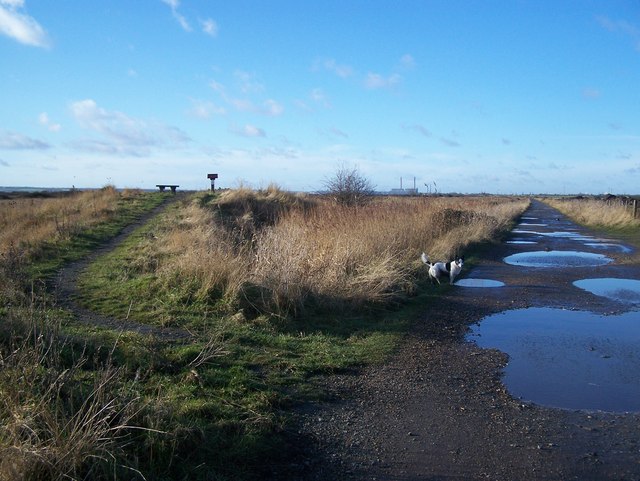St Mary's Marshes
Coastal Marsh, Saltings in Kent
England
St Mary's Marshes

St Mary's Marshes is a coastal marsh located in the county of Kent, England. Situated along the eastern coast, it is a significant part of the unique landscape known as the Romney Marshes. The marshes cover an extensive area and stretch from the town of Lydd to the historic village of Dymchurch.
St Mary's Marshes consist of a mixture of marshland and saltings, which are areas of land that are periodically flooded by seawater. The marshes are characterized by their low-lying, flat terrain and are dissected by numerous drainage ditches and small streams. The area is renowned for its rich biodiversity, with a variety of plant and animal species calling it home.
The marshes are an important habitat for both resident and migratory birds. It serves as a breeding ground for several species, including the rare bittern and marsh harrier. During the winter months, large flocks of wading birds, such as avocets and dunlins, can be observed feeding on the mudflats and saltmarshes.
The landscape of St Mary's Marshes is also of historical and cultural significance. It has been shaped by centuries of human activity, including sheep farming and salt production. The remains of old salt pans and sheep folds can still be seen scattered throughout the marshland, providing a glimpse into the area's past.
Due to its ecological importance, St Mary's Marshes is designated as a Site of Special Scientific Interest (SSSI) and is also part of the wider Romney Marshes Special Protection Area (SPA). These designations ensure that the marshes are protected and managed sustainably to preserve their unique natural heritage for future generations to enjoy.
If you have any feedback on the listing, please let us know in the comments section below.
St Mary's Marshes Images
Images are sourced within 2km of 51.476428/0.59162826 or Grid Reference TQ8078. Thanks to Geograph Open Source API. All images are credited.







St Mary's Marshes is located at Grid Ref: TQ8078 (Lat: 51.476428, Lng: 0.59162826)
Unitary Authority: Medway
Police Authority: Kent
What 3 Words
///tragedy.behind.subway. Near Allhallows, Kent
Nearby Locations
Related Wikis
South Thames Estuary and Marshes
South Thames Estuary and Marshes is a 5,289-hectare (13,070-acre) biological Site of Special Scientific Interest which stretches between Gravesend and...
St Mary Hoo
St Mary Hoo is a village and civil parish in Kent, England. It is on the Hoo Peninsula in the borough of Medway. According to the 2001 census it had...
Thames Estuary
The Thames Estuary is where the River Thames meets the waters of the North Sea, in the south-east of Great Britain. == Limits == An estuary can be defined...
River Thames
The River Thames ( TEMZ), known alternatively in parts as the River Isis, is a river that flows through southern England including London. At 215 miles...
Have you been to St Mary's Marshes?
Leave your review of St Mary's Marshes below (or comments, questions and feedback).











